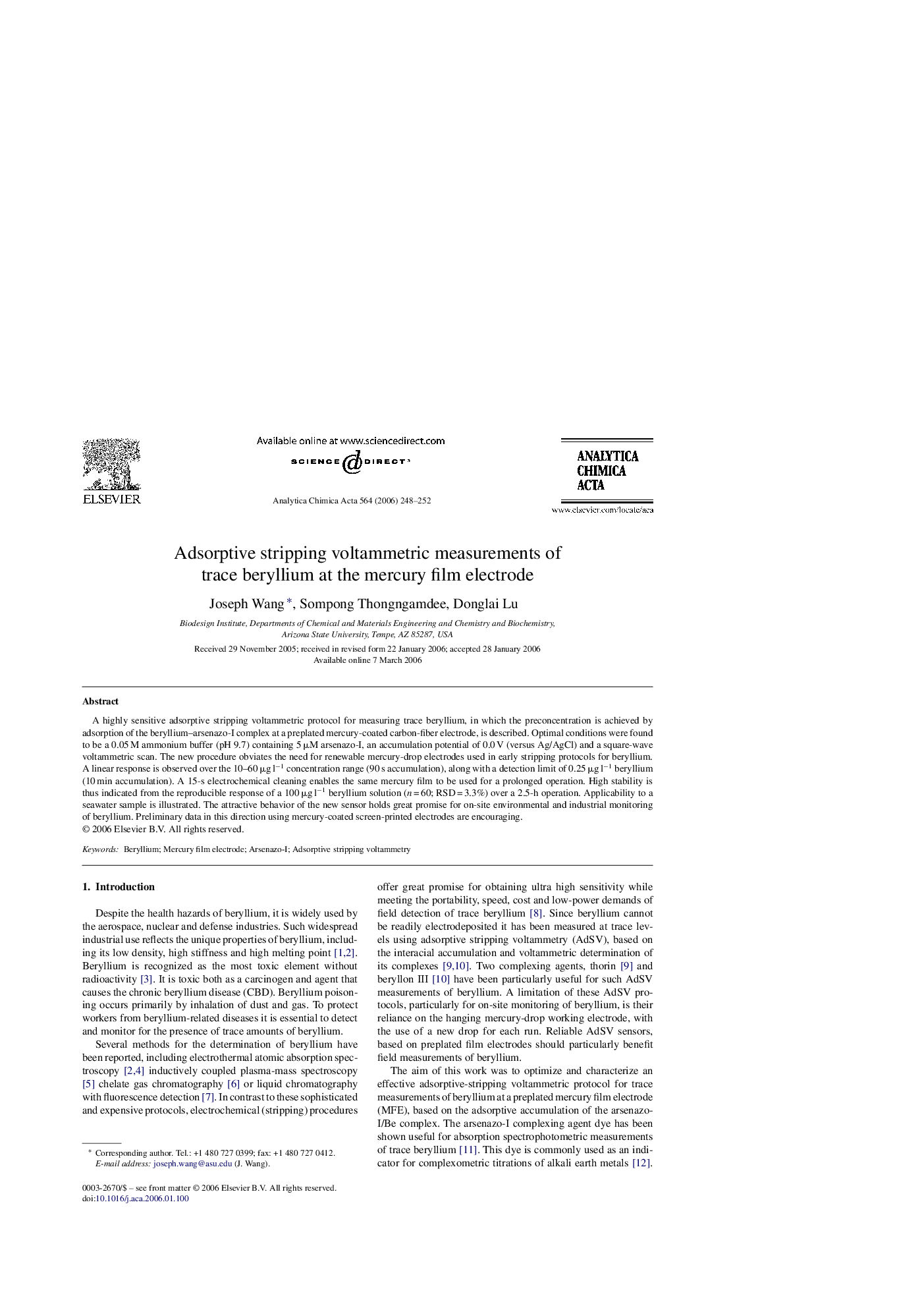| Article ID | Journal | Published Year | Pages | File Type |
|---|---|---|---|---|
| 1172232 | Analytica Chimica Acta | 2006 | 5 Pages |
Abstract
A highly sensitive adsorptive stripping voltammetric protocol for measuring trace beryllium, in which the preconcentration is achieved by adsorption of the beryllium-arsenazo-I complex at a preplated mercury-coated carbon-fiber electrode, is described. Optimal conditions were found to be a 0.05 M ammonium buffer (pH 9.7) containing 5 μM arsenazo-I, an accumulation potential of 0.0 V (versus Ag/AgCl) and a square-wave voltammetric scan. The new procedure obviates the need for renewable mercury-drop electrodes used in early stripping protocols for beryllium. A linear response is observed over the 10-60 μg lâ1 concentration range (90 s accumulation), along with a detection limit of 0.25 μg lâ1 beryllium (10 min accumulation). A 15-s electrochemical cleaning enables the same mercury film to be used for a prolonged operation. High stability is thus indicated from the reproducible response of a 100 μg lâ1 beryllium solution (n = 60; RSD = 3.3%) over a 2.5-h operation. Applicability to a seawater sample is illustrated. The attractive behavior of the new sensor holds great promise for on-site environmental and industrial monitoring of beryllium. Preliminary data in this direction using mercury-coated screen-printed electrodes are encouraging.
Related Topics
Physical Sciences and Engineering
Chemistry
Analytical Chemistry
Authors
Joseph Wang, Sompong Thongngamdee, Donglai Lu,
